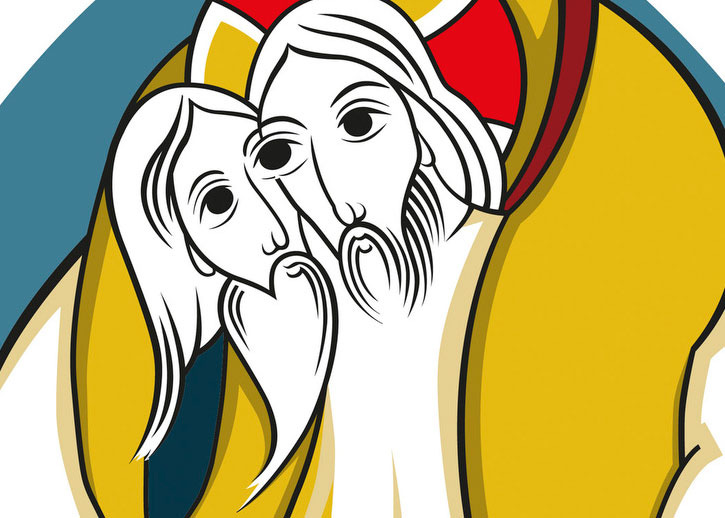Marko Rupnik and iconographic heresy
07-01-2024
Iconographic heresy: an idea we need to get backIf you’ve been following this blog, you’ve been well introduced to the idea that Byzantine sacred art, and those forms that followed it in organic continuity from the Romanesque to the Gothic, is a kind of visual language. Its very particular use of line, form, value, space, colour, gesture etc., constitute the vocabulary of the language used to convey very specific theological ideas. So what happens when those forms are used for ill, instead of good, to deceive, confuse or obfuscate that truth? How does an icon teach and confirm Christian doctrine? And more to the point, how can that visual language be misused to convey ideas opposed to doctrine? What is a heretical icon, and can we find a use for this concept in the western tradition of sacred art? Last week Anthony Visco, in an op ed for the journal of the Institute for Sacred Architecture, brought up a point that needs some more focus in the Rupnik situation. “It should not have taken his scandalous behaviour to see how problematic his art was.” No, it certainly should not have, but how did that happen? How were Christians so easily duped, or more likely shamed into silence, told they couldn’t possibly understand his work? How has the modern artistic doctrine of visual indifference - a variety of moral relativism - come to dominate our thinking about sacred art? The director of the Atelier for the Sacred Arts in Philadelphia¹ wrote in “Marko Rupnik: Modern Iconographer or Denier of the Incarnation?”:
But not being in that tradition himself, Professor Visco does not press the obvious conclusion that any Byzantine iconographer would not hesitate to make: that Rupnik’s art is simply heretical. If the idea that visual art can be orthodox or heterodox is new or surprising, it can only be because we have for centuries abandoned the real purposes of Christian sacred art. So, let’s talk about that idea and see if we can shift our perspective back a little to something more in keeping with those ancient traditions, before that great continuity was broken in the Renaissance. This is a post for paid members. Join us to start exploring these ideas. The Sacred Images Project looks at art history and culture through the lens of the first 1200 years of Christian sacred art.If you would like to accompany us into a deep dive into these spiritually and culturally enriching issues, to grow in familiarity with these inestimably precious treasures, I hope you’ll consider taking out a paid membership, so I can continue doing the work and expanding it.This is my full time work, but it is not yet generating a full time income. I rely upon subscriptions and patronages from readers like yourself to pay bills and keep body and soul together. You can subscribe for free to get one and a half posts a week. For $9/month you also get a weekly in-depth article on this great sacred patrimony, plus extras like downloadable ebooks, mini-courses, high res images, photos, videos and podcasts (in the works).If you would like to set up an ongoing patronage for an amount of your choice, you can do that at my studio blog, Hilary White; Sacred Art, where you can also take a browse around my shop where I sell prints of my drawing and painting work and other items.Subscribe to The Sacred Images Project to unlock the rest.Become a paying subscriber of The Sacred Images Project to get access to this post and other subscriber-only content. A subscription gets you:
|

